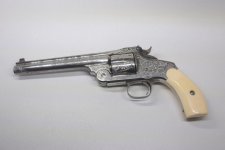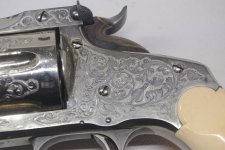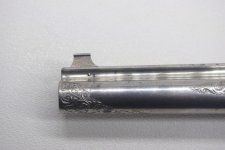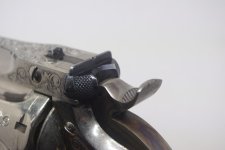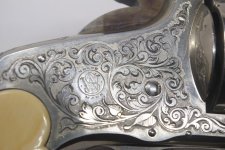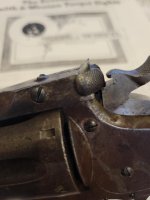Oldmanwesson
Member
There is no better feeling as a collector when you realize that your new purchase turns out to be way more than you had expected. This New Model No. 3 was, according to the vendor, engraved and customized "after-market" in England. Still a beautiful piece, but after-market custom work is never the same as the original. So, when I got the S&W factory letter, I was pleasantly surprised that the gun I had bought was in its original factory configuration. It is listed as a "New Model No. 3 Target Special", nickel plated, .44 Russian, with target sights, "Smith and Wesson Type 4" engraving and ivory grips, shipped to Birmingham in 1902. The timeline would fit for it to be a Young-family engraving job however when you look at it closely, the "hash mark" border around the engraving is something I have not seen on Young's work, or anywhere else. I don't know - maybe someone here does?? The sights are the standard Paine Black Bead front sight but the rear is the rare target sight apparently exclusively used on early 32-44 models (well, obviously not...). It is not adjustable for elevation but windage can be adjusted by drifting the blade with a brass punch or mallet. This piece is pristine, and mechanically perfect. It looks unfired to me.

